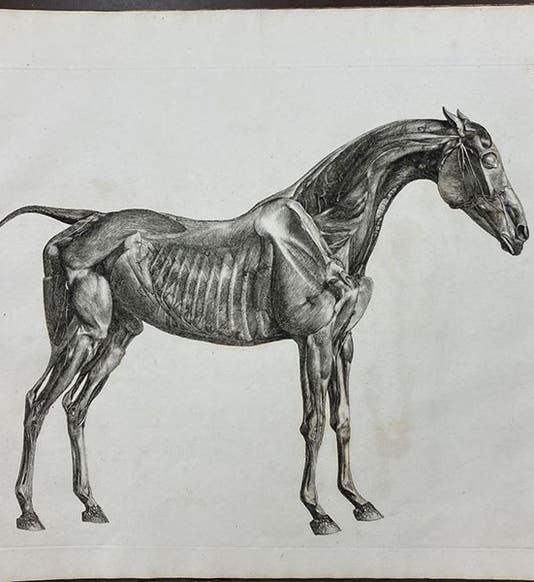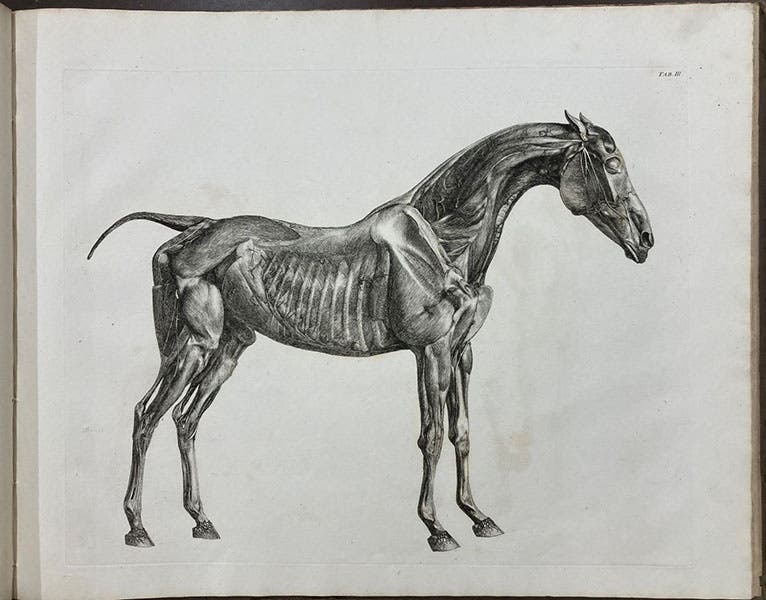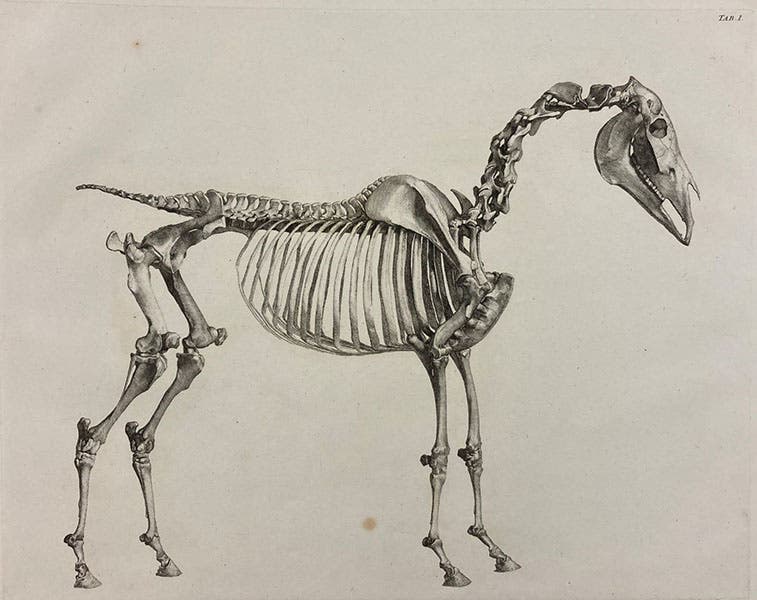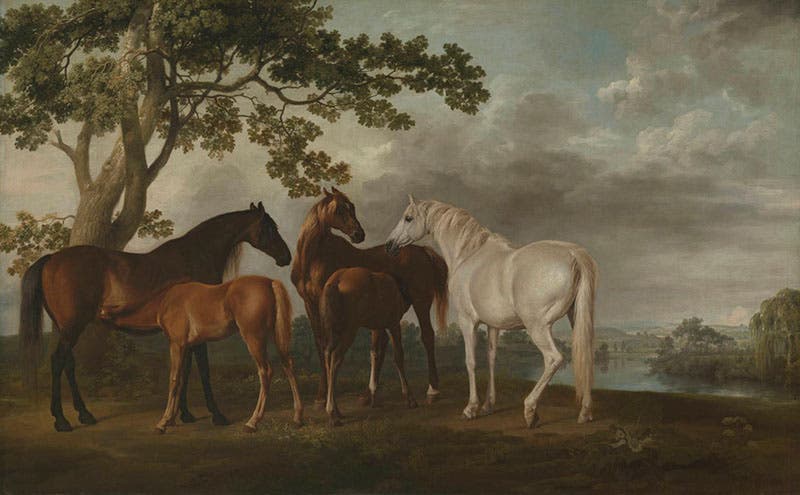Scientist of the Day - George Stubbs
George Stubbs, an English artist, was born Aug. 25, 1724. We wrote a post on Stubbs 7 years ago, in which we discussed his painting of a moose that was included in Thomas Pennant's Arctic Zoology (1784), and his painting of a kangaroo for Captain Cook. That post did not make the transition to the new format, so if you click on this link, you get only three images and no text. We will try to get it fixed, and you might try the link at a later time.
Today, however, we are going to discuss Stubbs the horse painter, and more specifically, the book on horse anatomy that Stubbs published to aid himself, and all other horse artists, in getting the anatomy of the horse right in paintings. He spent several years, in the late 1750s, up in Lincolnshire, dissecting horse cadavers, which he would hang by cables from the ceiling and slowly take apart, recording their muscle and skeletal structure on paper all the while. It must have been a messy and unpleasant business, but Stubbs was apparently convinced that personal anatomical knowledge of the horse would make him a better horse painter, and he stuck to it. He was not wrong. When he was through, he had 24 finished drawings that he wanted to engrave and publish. He could find no engraver willing to take on the task, so he taught himself etching, and etched his own plates; by the time he was done, he was an excellent etcher/engraver.
The Anatomy of the Horse was published in 1766, in a large, oblong folio format. Why we have a copy in the Library, I do not know – it was bought before my time, and it does not really fall within our collection guidelines. Our copy is not a pristine copy – the covers are a little beat up, and some of the plates are foxed. But Stubbs' etchings are just marvelous. There are 18 plates in all (some of them contain two etchings), and they show side and oblique views of horses with the skin removed, with the outer layer of muscles removed, and with just the bones remaining. Each etching has a “key”, which is in turn explained in the text; sometimes the keys are on separate plates from the drawings; sometimes they are on the same plate (as in our fifth and sixth images). The etchings are very "clean," like the woodcuts of human anatomy in Andreas Vesalius’s De fabrica of 1543, and are not at all discomfitting to look at. We have not yet scanned our copy, so I took these photos with my iPhone; we will get the book scanned when we can, and replace the images here with more professional ones.
The book was a great success among painters and students of animal anatomy, and it was reissued for the next 50 years, with the plates printed on demand as copies were sold, so auctioneers have quite a task trying to determine the "state" of the plates in the copies they put up for sale. It sells quite often, for a specialized book, so clearly many copies were printed over its 60-year lifespan.
If you search Google Image for "George Stubbs horse painting," you will find scores of Stubbs' oil paintings, which can be seen in all the world's major museums, and in the Royal Collections in England. The Yale Center for British Art has an especially fine collection of Stubbs horses. For today’s post, we selected Mares and Foals in a River Landscape, painted between 1760 and 1769, which is in The Tate in London, and which contains a variety of horses (eighth image). In our previous post on Stubbs, we included for starters one of his many paintings that show a horse attacked by a lion, a favorite theme with Stubbs. You can still see it, even though the post is broken right now.
There are quite a few portraits of Stubbs, but none that I could find that depict him in his late 30s, when he was preparing his Anatomy of the Horse. So we show here a self-portrait, painted in enamel on a plaque of Wedgwood porcelain, and dating to the 1780s. It is in the National Portrait Gallery in London (second image).
William B. Ashworth, Jr., Consultant for the History of Science, Linda Hall Library and Associate Professor emeritus, Department of History, University of Missouri-Kansas City. Comments or corrections are welcome; please direct to ashworthw@umkc.edu.







![Horse skeleton going away, with key, etching by George Stubbs, The Anatomy of the Horse, plate 3 [sic], 1766 (Linda Hall Library)](https://assets-us-01.kc-usercontent.com:443/9dd25524-761a-000d-d79f-86a5086d4774/22b056d0-e678-4616-b08c-91f4f3a21dc1/stubbs6.jpg?w=737&h=600&auto=format&q=75&fit=crop)






